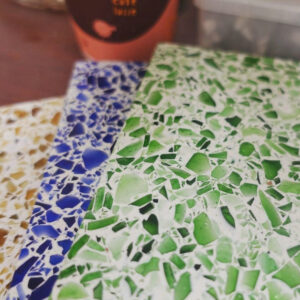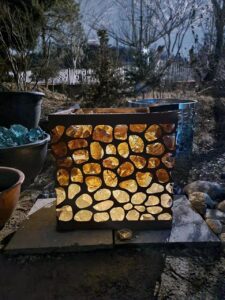Terrazzo flooring, known for its durability, beauty, and sustainable characteristics, has a rich history dating back to ancient times. One key ingredient that has evolved over the years to enhance its aesthetic appeal and eco-friendliness is crushed glass. This article explores the development process of using crushed glass in terrazzo flooring, highlighting its journey from waste material to a prized design element in modern architecture.



Ancient Beginnings
Terrazzo flooring has its roots in ancient civilizations like the Romans, who used crushed marble and stone to create durable and decorative surfaces. However, the use of glass in terrazzo flooring didn’t become prominent until the 20th century.
Early Innovations
The early 20th century saw innovations in terrazzo flooring with the development of epoxy resins and cementitious binders. These materials allowed for the incorporation of crushed glass in terrazzo, providing an array of color options and design possibilities.
Recycled Glass in Terrazzo
As the awareness of environmental issues grew, the demand for sustainable building materials increased. This shift in perspective led to the exploration of recycled materials in construction. Crushed glass, sourced from discarded bottles, windows, and other glass products, proved to be an excellent candidate for terrazzo floors.
The Glass Crushing Process
The process of manufacturing crushed glass for terrazzo involves several key steps:
Collection and Sorting: Waste glass is collected and sorted based on color and size. Clear glass, green glass, brown glass, and other hues are separated to create a diverse palette of colors for design.
Cleaning and Pre-processing: The sorted glass is thoroughly cleaned to remove impurities such as labels, caps, and contaminants. It is then crushed into various sizes, depending on the desired design.
Melting and Fusing: In some cases, the crushed glass may be melted and fused together to create custom glass aggregates. This process allows for the creation of unique colors and patterns.
Blending and Binding: The crushed glass is blended with other aggregates like marble, granite, or quartz, depending on the design specifications. A binder, often epoxy resin or cement, is used to bind the aggregates together.
Installation: The mixture is poured, spread, and polished on-site to create the beautiful and durable terrazzo floor.
Benefits of Crushed Glass in Terrazzo Flooring
Aesthetic Versatility: Crushed glass offers an extensive range of colors, sizes, and patterns, allowing architects and designers to create unique, eye-catching its designs.
Sustainability: Using recycled glass in it promotes sustainable building practices by reducing waste in landfills and conserving natural resources.
Durability: Terrazzo flooring is known for its longevity and resilience, and the addition of crushed glass only enhances these characteristics.
Easy Maintenance: Crushed glass floors are easy to clean and maintain, making them a practical choice for commercial and residential spaces.
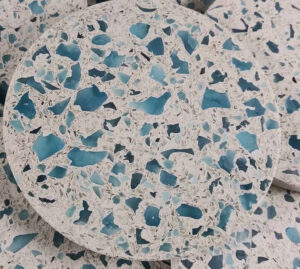
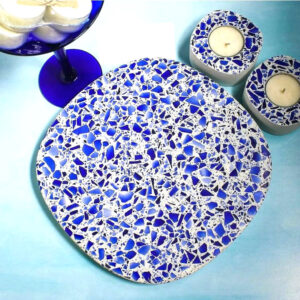
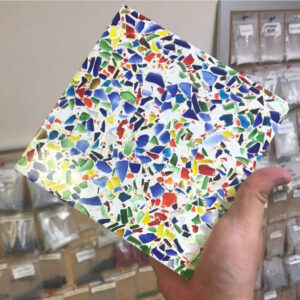
Conclusion
The development of using crushed glass in terrazzo flooring has transformed this age-old flooring option into a sustainable and visually captivating choice for modern architecture. With its environmental benefits, endless design possibilities, and enduring quality, crushed glass terrazzo floors continue to be a symbol of innovation and sustainability in the construction industry. As the demand for eco-friendly building materials grows, crushed glass in terrazzo is sure to remain a top choice for architects and designers worldwide.




